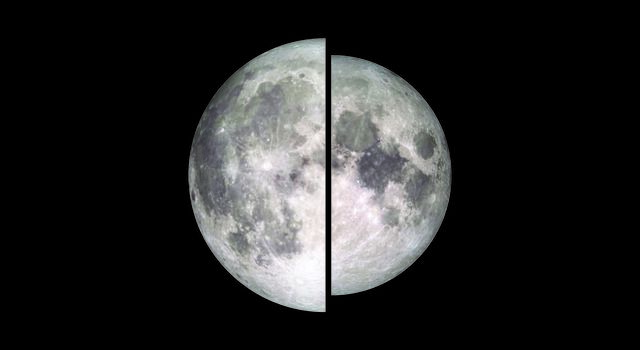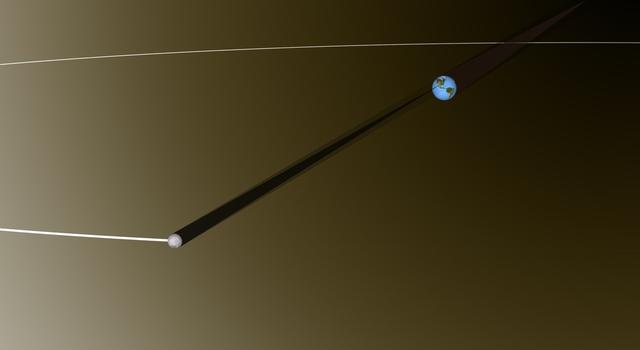|
Thursday, November 30, 2017
JPL News - Day in Review
Wednesday, November 29, 2017
JPL News - Day in Review
|
NASA Jet Propulsion Laboratory
NASA's Jet Propulsion Laboratory
4800 Oak Grove Dr
Pasadena, CA 91109
Posted by
Deep
at
4:52 PM
0
comments
![]()
Tuesday, November 28, 2017
JPL News - Day in Review
|
NASA Jet Propulsion Laboratory
NASA's Jet Propulsion Laboratory
4800 Oak Grove Dr
Pasadena, CA 91109
Posted by
Deep
at
4:19 PM
0
comments
![]()
Sunday, November 26, 2017
Jawatan Kosong (RM2,500) Guru Tuisyen Math, BM, Eng @ Nibong Tebal Penang/ Lahat iPoh Perak
- English dan matematik pra sekolah @ Lahat Ipoh Perak
http://majalah30.blogspot.com/p/blog-page_17.html
jawatan kosong guru tuisyen, kerja kosong guru tuisyen, kekosongan guru home tuition, jawatan kosong cikgu tution, kerja kosong cikgu tuisyen, jawatan kosong guru tuisyen ke rumah, jawatan kosong tuisyen di rumah, kerja sambilan guru tuisyen, kerja part time cikgu tuisyen, jobs home tutor, vacancy part time tuition teacher, pengajar SPM diperlukan, pengajar PT3 diperlukan, pengajar UPSR diperlukan, pengajar STPM diperlukan, pengajar matrikulasi diperlukan, jawatan kosong guru tuisyen, kerja kosong guru tuisyen, kekosongan guru home tuition, jawatan kosong cikgu tution, kerja kosong cikgu tuisyen, jawatan kosong guru tuisyen ke rumah, jawatan kosong tuisyen di rumah, kerja sambilan guru tuisyen, kerja part time cikgu tuisyen, jobs home tutor, vacancy part time tuition teacher, pengajar SPM diperlukan, pengajar PT3 diperlukan, pengajar UPSR diperlukan, pengajar STPM diperlukan, pengajar matrikulasi diperlukan, jawatan kosong guru tuisyen, kerja kosong guru tuisyen, kekosongan guru home tuition, jawatan kosong cikgu tution, kerja kosong cikgu tuisyen, jawatan kosong guru tuisyen ke rumah, jawatan kosong tuisyen di rumah, kerja sambilan guru tuisyen, kerja part time cikgu tuisyen, jobs home tutor, vacancy part time tuition teacher, pengajar SPM diperlukan, pengajar PT3 diperlukan, pengajar UPSR diperlukan, pengajar STPM diperlukan, pengajar matrikulasi diperlukan, jawatan kosong guru tuisyen, kerja kosong guru tuisyen, kekosongan guru home tuition, jawatan kosong cikgu tution, kerja kosong cikgu tuisyen, jawatan kosong guru tuisyen ke rumah, jawatan kosong tuisyen di rumah, kerja sambilan guru tuisyen, kerja part time cikgu tuisyen, jobs home tutor, vacancy part time tuition teacher, pengajar SPM diperlukan, pengajar PT3 diperlukan, pengajar UPSR diperlukan, pengajar STPM diperlukan, pengajar matrikulasi diperlukan, jobs, job, vacancies, vacancy, part time, opening, teaching, tutor, tuition, job tutor, work, employment, employee, workforce, workplace, oppurtunities, jobs, job, vacancies, vacancy, part time, opening, teaching, tutor, tuition, job tutor, work, employment, employee, workforce, workplace, oppurtunities,
Posted by
Deep
at
4:23 PM
0
comments
![]()
Friday, November 24, 2017
hello
Hello chantybanty1.chanti, my name is Anna and i'm from Russia. Currently I live in US.
I saw your profile on Facebook and went on doing my things, but it turned out very strange.
Your face looking at me was in my head all the time
You are super cute and handsome and I would like to know you more!
If you feel the same, email me, this is my email annaingjl4@rambler.ru and I will send some of my photos.
Hugs,
Anna
Posted by
Deep
at
3:07 AM
0
comments
![]()
Thursday, November 23, 2017
hi
Hi chantybanty1.chanti, my name is Elisabet and i'm from Russia
Many times in life, we can end up taking the people who are closest to our hearts for granted.
I am so used to all of the wonderful things that guys have done for me, but when I saw your profile on Instagram, I got curious what you could do?
I am sure you are kind of man, who appreciates relationships and cherishes their partners.
Want to know more about me, email me via laurahil692@rambler.ru
Hugs from Russia,
Elisabet
Posted by
Deep
at
3:02 AM
0
comments
![]()
Wednesday, November 22, 2017
hi
Hi chantybanty1.chanti, my name is Anastasia and i'm from Russia, but currently living in the USA.
Two weeks ago I found your profile on Badoo and must say I cant forget that face :-)
You are super cute and I would like to know you more!
If its mutual, email me, this is my email nelamo4ps@rambler.ru and I will send some of my photos.
Hugs,
Anastasia
Posted by
Deep
at
1:37 PM
0
comments
![]()
hi
Dear chantybanty1.chanti,
Finally I have got a change to write to you.
My name is Yana, i'm from Russia and now i'm living in USA :-)
I saw you first time on Facebook or Instagram, I don't remember, but today seeing you again made me write to you:)
You look so sexy and at the same time very cute and smart, just like my type.
Maybe we can talk? If you would like to know more about me, please, email me.
My email is micrenate87@rambler.ru
Posted by
Deep
at
4:59 AM
0
comments
![]()
Tuesday, November 21, 2017
hi
Dear chantybanty1.chanti,
Finally I have got a change to write to you.
My name is Irina, i'm from Russia and now i'm living in USA :-)
I saw you first time on Facebook or Instagram, I don't remember, but today seeing you again made me write to you:)
You look so sexy and at the same time very cute and smart, just like my type.
Maybe we can talk? If you would like to know more about me, please, email me.
My email is d8wwedith@rambler.ru
Posted by
Deep
at
9:07 PM
0
comments
![]()
JPL News - Day in Review
|
NASA Jet Propulsion Laboratory
NASA's Jet Propulsion Laboratory
4800 Oak Grove Dr
Pasadena, CA 91109
Posted by
Deep
at
5:02 PM
0
comments
![]()
hi
hello there chantybanty1.chanti! How are you cutie?
My name is Valeria and i am from Russia.
Soon i'm going to US to study and i'm trying to find some good person like you.
I found your profile on popular dating site and now i want to talk to you :-)
If you are interested in my photos please email me to nikoldfnruth@rambler.ru
Regards, Valeria
Posted by
Deep
at
6:58 AM
0
comments
![]()
Monday, November 20, 2017
hi
hello there chantybanty1.chanti! How are you cutie?
My name is Irina and i am from Russia.
Soon i'm going to US to study and i'm trying to find some good person like you.
I found your profile on popular dating site and now i want to talk to you :-)
If you are interested in my photos please email me to adr2kelke@rambler.ru
Regards, Irina
Posted by
Deep
at
10:32 PM
0
comments
![]()
hi
Hi chantybanty1.chanti, my name Maria and i'm from Russia.
Now i'm living in the US.
A week ago I found your profile on Badoo or something like that :-)
I dont remember to be honest :-)
You are super cute!
Maybe we can chat? You want my photos?
Please email me to sofie95qwruth@rambler.ru
XoXoXo, Maria
Posted by
Deep
at
8:09 PM
0
comments
![]()
JPL News - Day in Review
|
NASA Jet Propulsion Laboratory
NASA's Jet Propulsion Laboratory
4800 Oak Grove Dr
Pasadena, CA 91109
Posted by
Deep
at
5:21 PM
0
comments
![]()
Friday, November 17, 2017
JPL News - Day in Review
|
NASA Jet Propulsion Laboratory
NASA's Jet Propulsion Laboratory
4800 Oak Grove Dr
Pasadena, CA 91109
Posted by
Deep
at
4:16 PM
0
comments
![]()
Thursday, November 16, 2017
JPL News - Day in Review
|
NASA Jet Propulsion Laboratory
NASA's Jet Propulsion Laboratory
4800 Oak Grove Dr
Pasadena, CA 91109
Posted by
Deep
at
4:40 PM
0
comments
![]()
A Supermoon Teachable Moment from NASA/JPL Edu
|
NASA/JPL Edu
NASA's Jet Propulsion Laboratory
4800 Oak Grove Dr
Pasadena, CA 91109
Posted by
Deep
at
11:01 AM
0
comments
![]()
Tuesday, November 14, 2017
JPL News - Day in Review
|
NASA Jet Propulsion Laboratory
NASA's Jet Propulsion Laboratory
4800 Oak Grove Dr
Pasadena, CA 91109
Posted by
Deep
at
4:49 PM
0
comments
![]()
Monday, November 13, 2017
JPL News - Day in Review
|
NASA Jet Propulsion Laboratory
NASA's Jet Propulsion Laboratory
4800 Oak Grove Dr
Pasadena, CA 91109
Posted by
Deep
at
4:55 PM
0
comments
![]()
Blog Archive
-
▼
2017
(379)
-
▼
November
(40)
- JPL News - Day in Review
- JPL News - Day in Review
- JPL News - Day in Review
- Jawatan Kosong (RM2,500) Guru Tuisyen Math, BM, En...
- hello
- hi
- hi
- hi
- hi
- JPL News - Day in Review
- hi
- hi
- hi
- JPL News - Day in Review
- JPL News - Day in Review
- JPL News - Day in Review
- A Supermoon Teachable Moment from NASA/JPL Edu
- JPL News - Day in Review
- JPL News - Day in Review
- NASA/JPL Educator Workshop – Lunar and Meteorite S...
- hi
- hello
- JPL News - Day in Review
- Whatapp looking for Part Time message screener (Wo...
- yo
- Wanna get paid giving advice on Facebook?
- hi
- hi
- JPL News - Day in Review
- hi
- JPL News - Day in Review
- hello
- hello
- JPL News - Day in Review
- hello
- JPL News - Day in Review
- hey
- hey
- hey
- JPL News - Day in Review
-
▼
November
(40)
About Me
- Deep
- Hey all am sundeep......



















